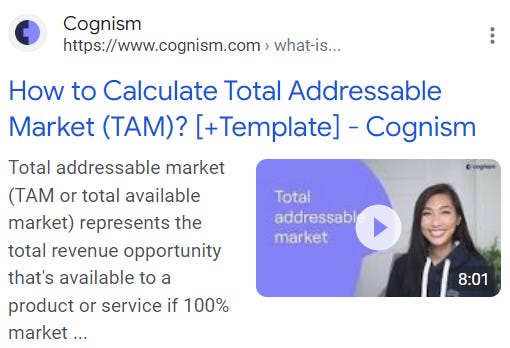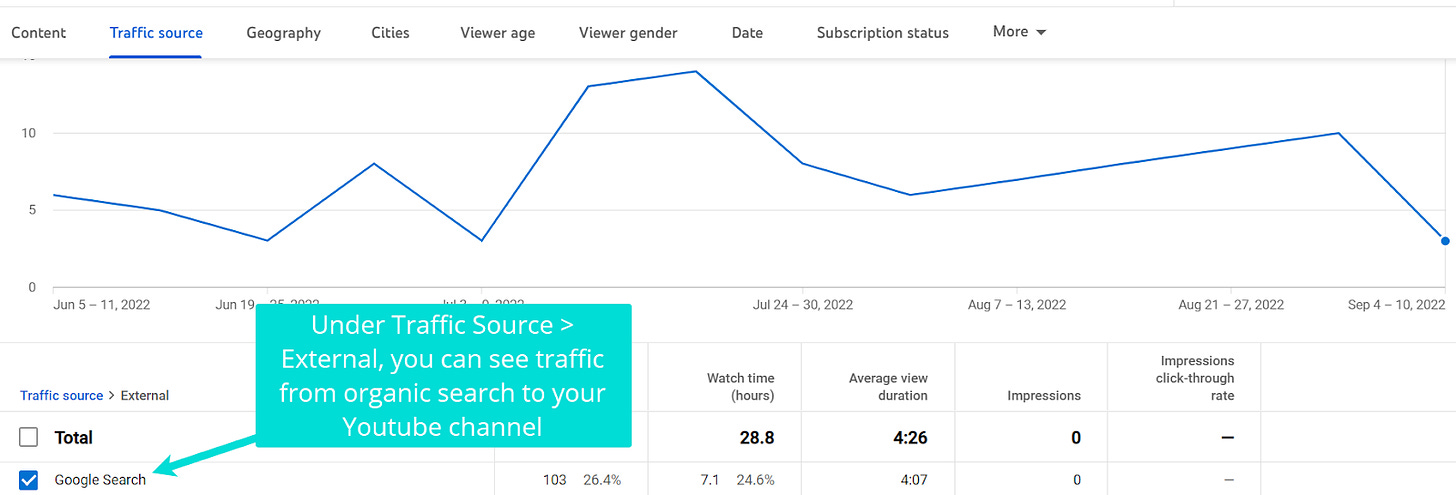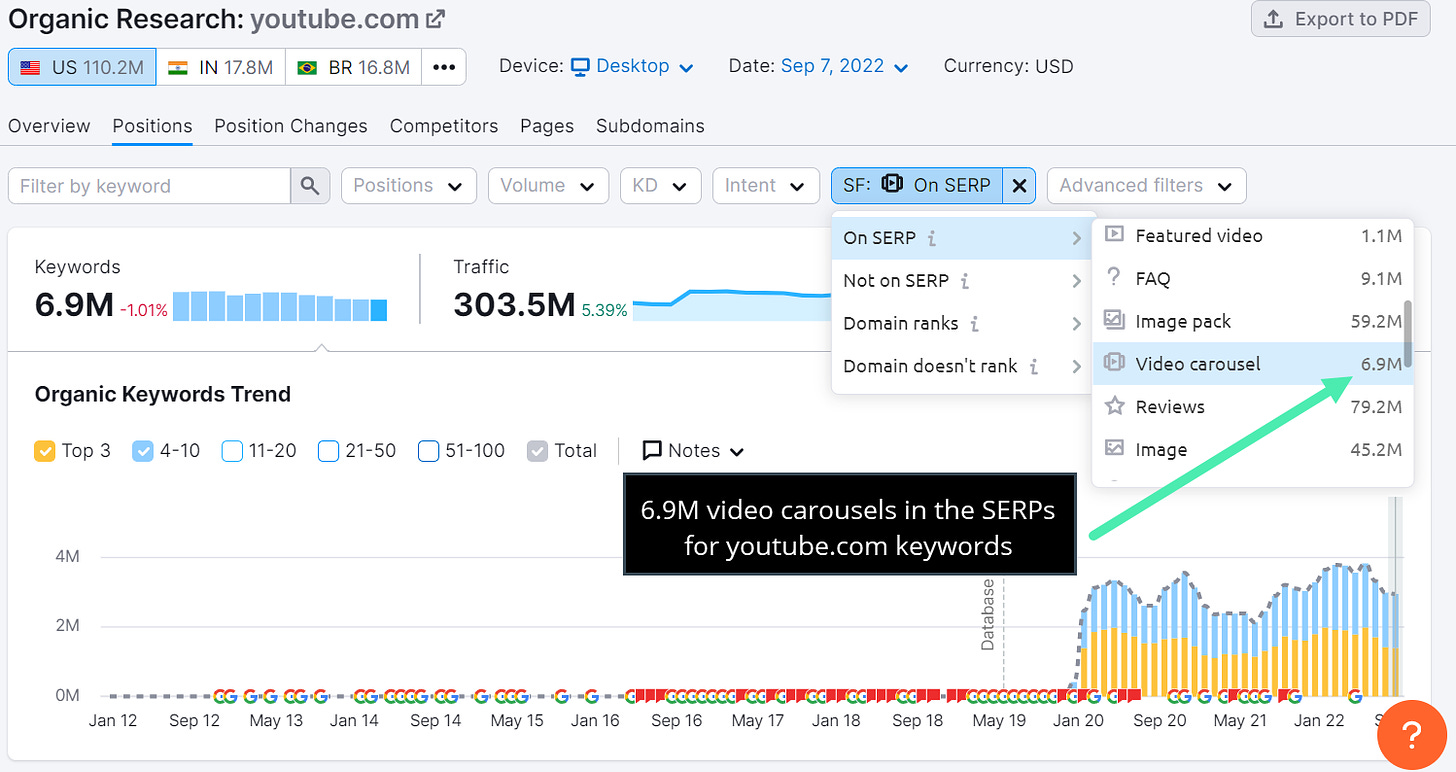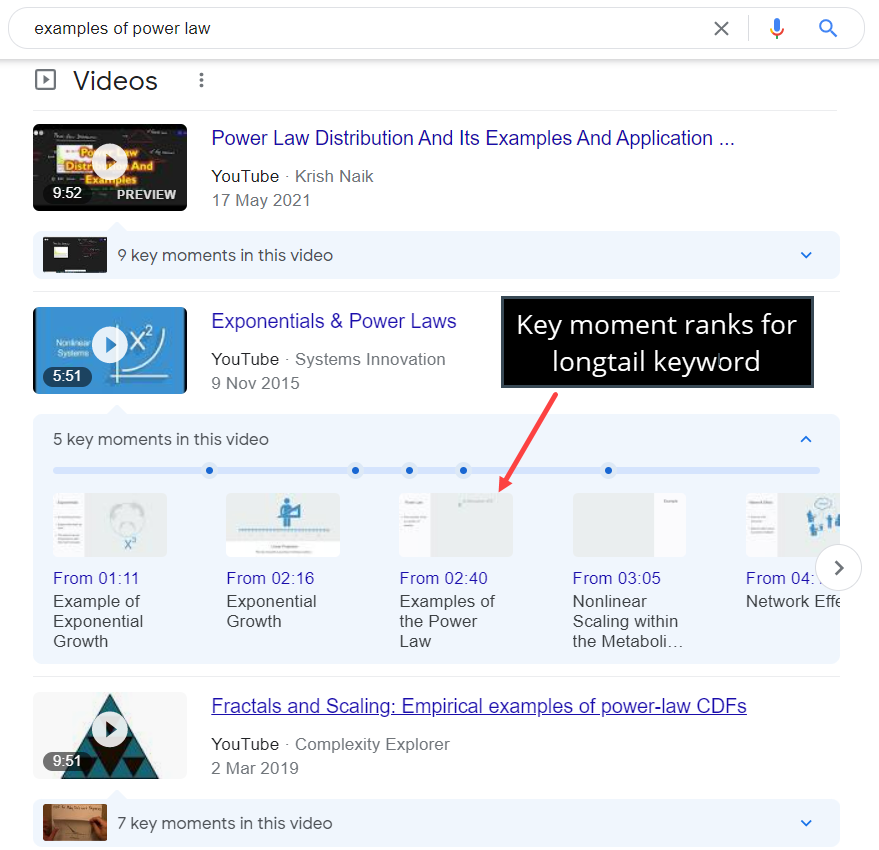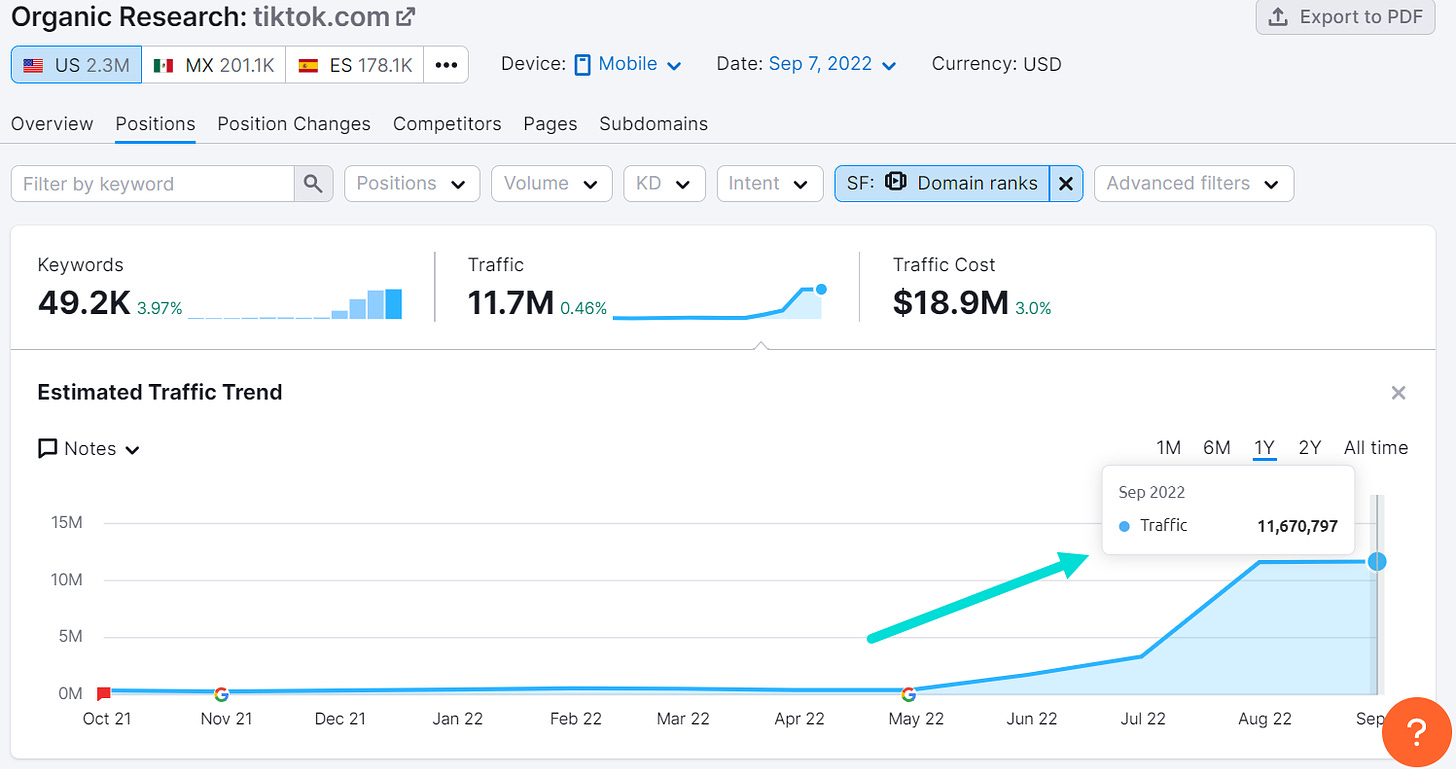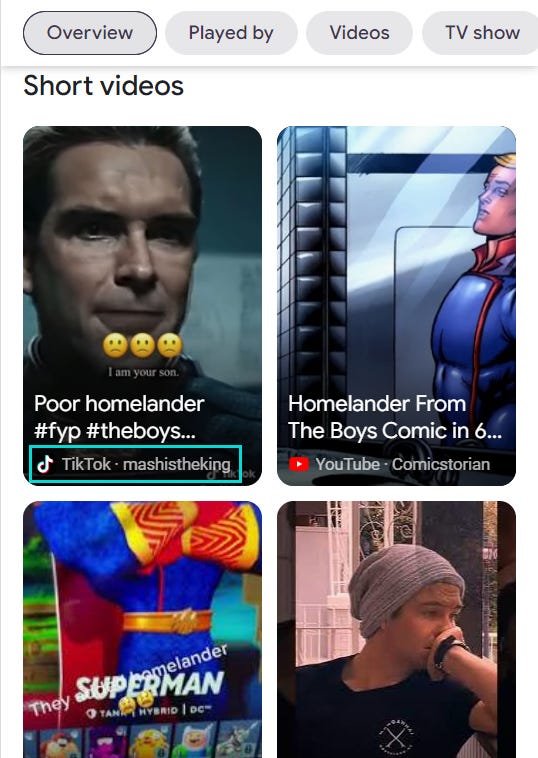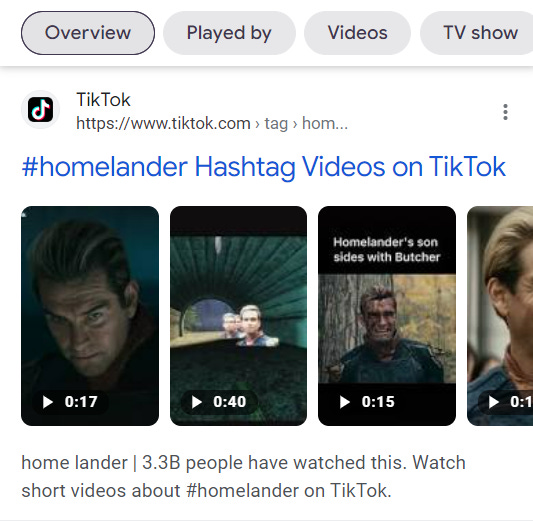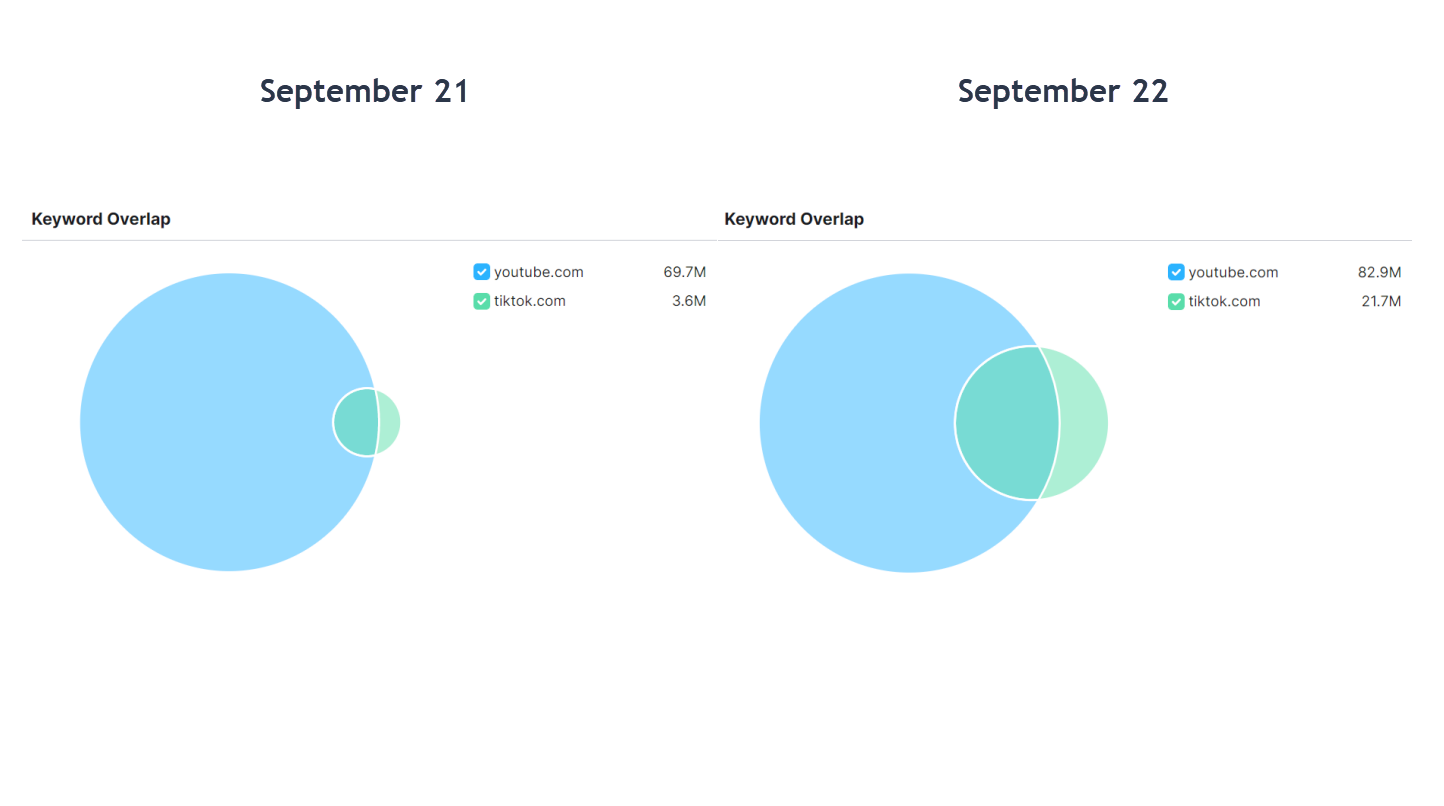How to think about video and SEO
In this article, I explain how videos can help organic visibility and dispel common myths.
One question I get asked over and over is, “do videos help SEO?” The question seems straightforward but actually has 3 answers:
What is the direct impact of videos on organic ranks?
Are there indirect benefits of embedding videos in content?
Can you leverage videos systematically for SEO?
Let’s take the first question off the table right away.
What most people want to know with that question is whether embedding videos in articles or landing pages has a positive impact on dwell time, which they assume sends a positive signal to Google’s ranking algorithm.
The answer is no. In my experience, videos have no direct impact on organic ranks. Let’s not even talk about Dwell time.
But that doesn’t mean embedding videos is a bad idea!
The indirect benefit of video embeddings: CTR
One of the biggest benefits of embedding videos in articles or landing pages is the positive impact on click-through rates through rich snippets. Embedding videos can lead to video thumbnails that attract more attention and clicks to your result. [x]
While more data is needed to make a definite statement, I looked at thousands of keywords from a large site with millions of monthly visitors and found that the CTR of snippets with video thumbnails is about 10% points higher on average (12% vs. 13.2%) with equal average position.
10% more clicks can make a substantial impact on a keyword that drives a lot of value for a company.
Mind you that video rich snippets don't appear on mobile and desktop by default. Google might decide to display them on mobile or desktop instead of both.
But CTR impact is not the only benefit of videos. There are second-order benefits, too. Having the choice to either read or watch content is a good user experience. Even further, there is an opportunity to drive Youtube subscribers through embedded videos. That’s how marketers should think about SEO and videos.
Organic Youtube = Brand, not performance
1 billion hours of videos are watched on Youtube every day. The platform has turned into a massive brand awareness channel. The only ways to use it as a performance channel are running direct-response ads or sell through its integrated commerce offering. Other than that, Youtube is all about getting in front of your customers and being top of mind when they have an intention to buy. [x]
The biggest mindset shift marketers need to do is thinking about videos in search as a way to build brand awareness instead of trying to get conversions out of them. We don’t like to see SEO as a performance channel because it has a slow feedback loop, but the ultimate goal of SEO is converting traffic. Youtube is different. It doesn’t want users to leave the platform and limits the options and visibility of content that tries.
If you do it right, organic search can become one of the biggest sources of new Youtube subscribers. Other than discovery channels like Linkedin or Twitter, organic search brings people with intent and longer watch times, which can be a positive signal for Youtube.
Video embeddings on sites can help feed Youtube channels, which in return can appear in organic search. In fact, video carousels have significantly grown over the last 2 years. Semrush shows almost 7M video carousels in the desktop SERPs and another 2.4M on mobile for youtube.com.
The Organic Growth angle is intentionally creating videos that rank in video carousels. In the screenshot below, you can see that Google pulls a subsection about “examples of the power law” from a video about “exponentials & power laws”. In other words, Google understands subsections and will rank them for corresponding search queries on Google. Nifty marketers create video outlines that are informed by SEO keyword research.
Another reason for embracing this strategy is that video carousels replace a blue link in the SERPs and decrease the total number of regular organic snippets. As the game changes and regular organic results get fewer clicks, marketers must adapt and find new ways to capture clicks - even if they don’t convert immediately.
Is this scalable? Not really. The results of automated video production are still poor, and even a user-generated approach is difficult (G2 has video reviews but is a narrow edge case). High production quality is still a barrier to entry for many brands but also a competitive advantage.
Video embeddings and growing Youtube channels are integrator strategies. That doesn’t make them less valuable; you just have to think about it from a Pareto perspective. Create videos for 20% of your most valuable keywords.
Next stop, TikTok?
What works for Youtube might also work for TikTok. According to Semrush, TikTok’s traffic from video carousels has been growing quickly over the last 6 months.
Tik Toks appear in Google’s Short Videos carousel and in video carousel rich snippets for tiktok.com itself. Both are opportunities to grow TikTok accounts through organic search.
2 years ago, I wrote about how TikTok’s SEO strategy is failing. Since then, TikTok has solved its rendering issues and created search pages that aggregate TikToks for any type of topic. The Youtube competitor has been thriving in organic search and fuels its growth loop.
Marketers have a similar opportunity to create content on TikTok to rank in organic search - not as a performance but as a brand-building channel.



